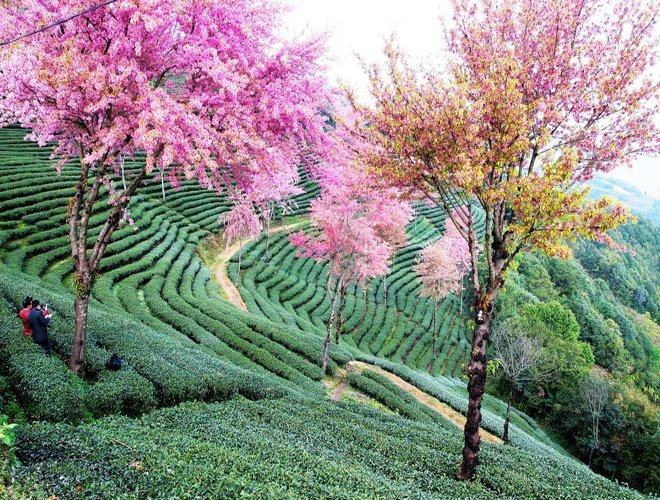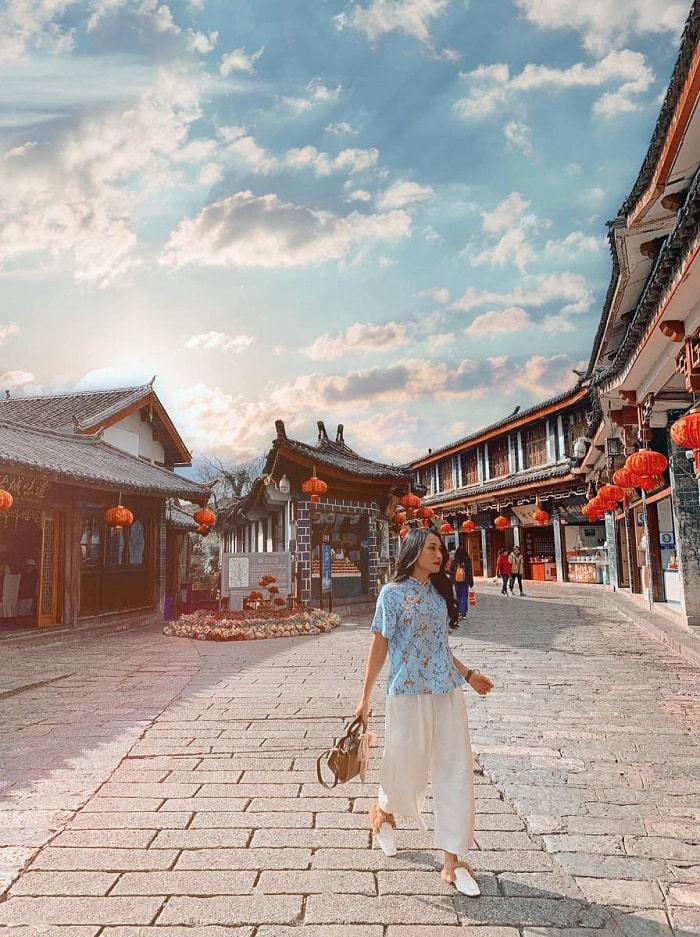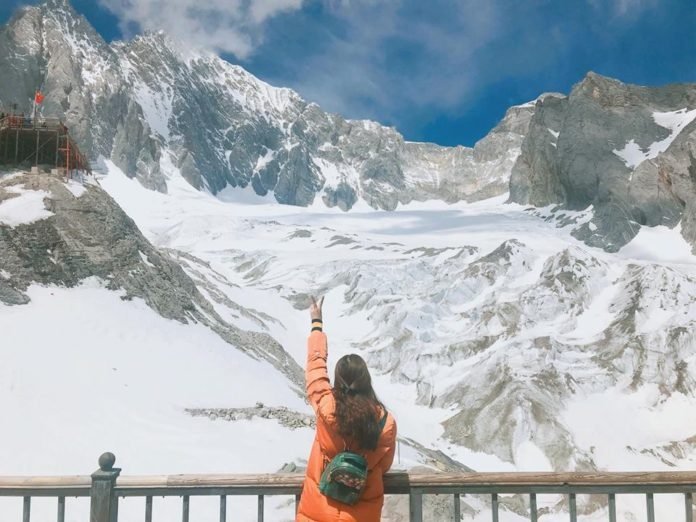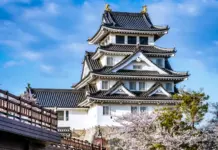Blessed by nature with magnificent and spectacular landscapes, Yunnan is proud to be a famous and it is a worth visit destination that attracts a large number of tourists all over the world. Yunnan is not only captivated by its beautiful landscapes, but also with its unique culture and diversity of its ancient towns. With every step through the green and poetic alleys, people feel like they are lost in ancient times, immersed in a historical space full of legends. So, is Yunnan worth visiting, how to visit Yunnan, what to do in Yunnan? Let’s check out our Yunnan travel blog (Yunnan blog) with the fullest Yunnan travel guide (Yunnan guide) from how to get to Yunnan, best places to visit as well as top things to do in Yunnan to help you maximize your trip as follows!
- The ULTIMATE Lijiang travel guide: Top things to do, where to visit, stay, eat & MORE
- The FULLEST guide to Fenghuang Ancient Town: Top things to do, Eat, Tips & MORE
- Macau itinerary 2 days: How to spend 2 days in Macau perfectly from Hong Kong
- Must do in Macau: 11+ best things to do in Macau for First-Time Travelers
- Hangzhou itinerary 1 day: Slow Living in the Tech City with 1 day in Hangzhou



Yunnan is a great choice for those who set foot in this country of “billion people”. Yunnan is home to beautiful natural landscapes such as snow-capped mountain peaks, richly diverse ecosystems, or lakes bluer than jade.

This place has many tourist attractions, cultural heritages, and charming sites such as: Lijiang ancient town, ever spring of Kunming city, Yulong Snow Mountain (Jade Dragon Snow Mountain)…
Overview of Yunnan (# yunnan travel blog)

Yunnan Province is located in Southwest China, bordered by Sichuan Province to the north, Guizhou Province and Guangxi Zhuang Autonomous Region to the east, Vietnam to the southeast, Laos to the south, Myanmar to the south west and Tibet in the northwest. Because China’s Yunnan province borders the Northwest region of Vietnam so traveling to Yunnan is extremely easy for Vietnamese visitors.

The capital of this province is Kunming city. Yunnan is also the origin of the Red River, Da River, and Mekong River. Yunnan is a province with mountainous terrain and primeval forests. If you have ever read Jin Yong’s martial arts and chivalry novels or are a fan of the wuxia Demi-Gods and Semi-Devils, you cannot forget the character Duan Yu – prince of Dali Kingdom. Historically, Dali was also part of present-day Yunnan province.

Yunnan is known as the land of plants, animals and medicinal plants. Along with the plateau terrain with many mountains and hills, many rivers and lakes have created charming natural landscapes. This is also the province with the largest number of ethnicities in China, with up to 51 ethnic minorities living together, creating cultural and culinary diversity.

Yunnan is a perfect choice for guests who love to explore tranquil lands and majestic natural landscapes. Here there are picturesque landscapes, snow-capped mountain peaks, emerald green lakes and diverse ecosystems.
Yunnan possesses for itself many UNESCO World Heritage Sites: Lijiang ancient town, Three parallel rivers flowing around Yunnan protected areas, Famous Shilin stone forest scenic, Chengjiang Fossil Site, The Cultural Landscape of Honghe Hani Rice Terraces…

Why shoud you visit Yunnan? (# yunnan travel blog)

- Yunnan has a pleasant climate, mild in winter and cool in summer. It is a suitable location for vacations all year round.
- Yunnan boasts countless natural wonders: deep canyons, towering mountain ranges, tropical forests, terraced fields, crystal-clear lakes, and majestic snow-capped mountains that stretch close together. road to the Tibetan plateau.
- Yunnan, home to 51 ethnic minorities, is the place to experience the unique cultures of China’s minority groups.
- Yunnan has well-preserved ancient towns and villages, with ancient houses, worn bluestone streets and rich history.
- Majestic natural scenery: Regardless of whether you want to stroll around the old towns or go to rural villages in Yunnan, you can enjoy the magnificent natural scenery here.
- Feel captivated by the world’s natural wonders – Stone forest scenic, Yuanyang Rice Terraces, Dongchuan Red Land, First bend of the Yangtze River, Tiger Leaping Gorge, etc.
- Where you can reach cloud nine: During your trip, you will definitely see the highest snow-capped mountains in China. The average altitude is always 3000m or more, Jade Dragon Snow Mountain is the most typical destination when you come here you will feel like you are on cloud nine!
- Colorful national culture: Yunnan has ethnic diversity (51 ethnic groups). Each ethnic group here has its own customs, lifestyle, cuisine, colorful costumes and beliefs.
- Creating works of art: Yunnan is considered a paradise for photographers.
- You can go to Dongchuan Red Land to get yourself a photo album of this sacred and warm land.
- The Yuanyang Rice Terraces are like a stairway to heaven and are worth your time to explore and take pictures.
- Everything here is a hunting target for precious photos: sunsets, sunrises, sea of clouds, Hani folk houses, rice fields, cattle, cows…

When is the best time to visit Yunnan? (# yunnan travel guide)

Due to the special geographical location and complex terrain, Yunnan winter will be affected by dry continental monsoons and summer will be influenced by moist oceanic monsoons. Yunnan province has rich and diverse climates stretching from the northern to southern regions of the province.
Yunnan has many high mountains bordering Tibet to the north/west, but also a 1,000 meter high mountainous plateau to the east and a tropical region to the south.

Yunnan has a warm climate all year round, so you can choose any season to come here and feel comfortable. But the best time to visit Yunnan is in the fall. In the fall, Yunnan is likened to a girl wearing a beautiful new dress, making anyone who sets foot here feel captivated.
The autumn scenery in Yunnan is wonderful, the leaves begin to turn red and yellow, the lake is clear blue and Jade Dragon peak is covered with white snow.
If you want to see cherry blossoms and chrysanthemums, come here in spring. The spring atmosphere fills every road and the landscape becomes fresher than ever with hundreds of flowers blooming.

The climate is spring-like
Because of its high altitude above sea level, Yunnan has a spring-like climate all year round.
- Coldest months: December and January with average daily temperatures ranging from 4°C to 16°C.
- Hottest months: June, July and August with average daily temperatures ranging from 17°C to 25°C, extremely suitable for outdoor activities.

Dry season and rainy season are separate (# yunnan travel guide)
Yunnan is divided into two distinct dry and rainy seasons. November to April is the dry season, when temperatures are quite high and solar radiation occurs frequently. So, don’t forget to use skin care products, such as sunscreen and sunglasses, if you travel during this time.
The rainy season usually lasts from May to October. But most of the heavy rain usually concentrates from June to September. During this season, temperatures can drop rapidly along with rain. So, in addition to an umbrella or other protective rain gear, you should wear a light jacket and long pants.

Weather patterns change throughout the day (# yunnan blog)
Yunnan is a mountainous province with high mountains in the west that have very diverse weather changes within the same day. It can be said that almost all 4 seasons of the year take place in just a day.
The lower part of the mountain is subtropical weather, the middle part of the mountain is temperate weather, and the higher mountain top is cold weather.

Best time to travel to Yunnan by months (# yunnan guide)
Yunnan’s diverse terrain and tropical locations lead to a diversity of landscapes and weather, and to choose the best time to go to Yunnan, plan carefully where you want to visit.
Spring (March to May)

Yunnan in spring is like a kingdom of blooming flowers everywhere. Not only that, spring is also the season of traditional festivals of the ethnic groups living together here.
Places in Yunnan you should visit in spring: Kunming, Lijiang and Dali ancient towns, Luoping and Xishuangbanna, Dongchuan…
Spring activities in Yunnan:
- Enjoy the blooming flowers everywhere in Yunnan.
- Witness the magnificence of Shilin Stone Forest Scenic, Kunming.
- Dive in the “ocean” of yellow flowers in Luoping.
- Feel the magic of tropical plants in Xishuangbanna.
Almost the festivals in Yunnan take place according to the Chinese calendar (lunar calendar), so you need to pay attention to the time to come here at the right time.
Summer (June to September)

In the midst of hot summer days, there’s nothing better than finding an ideal vacation spot. Yunnan where the average annual temperature is approximately 20-25 degrees Celsius, the air is always fresh and pleasant.
Activities to experience in Yunnan during summer days:
- Go on a trekking picnic in the ancient towns of Dali, Lijiang and Shangri-La.
- Cycling along the charming Erhai Lake in Dali.
- Escape the heat right down in the Tiger Jump Gorge between Lijiang and Shangri-La.
- Visit Puzhehei Scenic Area
Fall (October to November)

Experience Yunnan in the fall to enjoy the scent of ripe golden rice, admire the terraced fields of the Hani ethnic group and the clear and airy sky.
In autumn, Yunnan makes people fascinated by its strange beauty in every corner of Lijiang Ancient Town, in the cold breezes beside the rippling lake banks…
Activities worth experiencing when Yunnan comes to autumn:
- Visit the Dongchuan red land brilliantly colored with white coles flowers and green wheat.
- Experience hot spring bathing at Tengchong.
- Bird watching at Napa Lake in Shangri-La.
- Trekking to explore the long hiking route in Yubeng Shangri-la village.

Winter (December to February next year)
The winter months in Yunnan begins from December to February, the climate at this time is extremely mild. Yunnan’s temperature in winter is usually between 12ºC – 18ºC, however because the terrain here is clearly differentiated (therefore the landscape and temperature can vary significantly between day and night.
Note that when traveling to Yunnan, wait for the sun to go out, because this is the perfect time for you to have close to connect with nature.

How to get to Yunnan and how to get around in Yunnan?
Currently, there are two options for traveling to Yunnan: by air or by road.
From Vietnam, if you travel by air, you can go to Tan Son Nhat airport or Noi Bai airport to fly to Yunnan. Some famous airlines depart from Hanoi, Da Nang, Ho Chi Minh City such as Vietnam Airline, Vietjet Air,… to be able to buy plane tickets to Kunming Changshui International Airport in the capital city of Yunnan.

There are other means of transportation that can be used when you getting around Yunnan such as buses and trains. If you don’t know how to speak Chinese, you should choose to take a taxi for more convenience and also to see the streets more conveniently.

Where should you stay in Yunnan?
Yunnan is one of the Chinese provinces with the largest number of tourists visiting. Therefore, to fully meet the needs of guests, Yunnan province always has a variety of forms of accommodation such as: 5-star hotels, resorts, homestays and rental apartments,… depending on your budget, you should choose a suitable place to stay.

Depending on your itinerary, you can choose to book a room in Kunming (Agoda, Booking), Lijiang (Agoda, Booking) or Chengdu (Agoda, Booking). You should book a room 1-2 months in advance to get a preferential price rather than booking close to the departure date.
How much does it cost to travel to Yunnan?
When we want to travel to a certain place, we need to spend a certain amount of money. So, to travel to Yunnan, let’s take a look at some of the following mandatory costs:
- To get to Yunnan by air, we need a visa, air ticket from Vietnam to Yunnan costs about $60. You should apply for your visa 1 month in advance to save more money.
- Hotel average cost in Yunnan range from $20 – $150 / 1 night/ 1 room for 2 people depending on the type of hotel you choose.
- The cost for you to travel in Yunnan by bus is about $0.5/trip, if traveling by taxi is about $6/person.
- Food costs for a day are about $30 – $50 depending on the restaurant you choose.
- In addition to the above costs, if you want to visit tourist attractions in Yunnan, you will have to pay an entrance fee (admission) and other incidentals.

Where to go and what to do in Yunnan?
Lijiang Ancient Town
As an ancient town with a history of more than 800 years, Lijiang is also an ancient town with an altitude of 2,400m. Lijiang ancient town is always proud to be the place to preserve traditional cultural features, typical of Yunnan in particular and of China in general. The climate here is cool all year round, making visitors feel comfortable and at ease. Or the breathtakingly beautiful sunset.

Lijiang is like a treasure of Yunnan. It is filled with historical relics, snowy mountains, breathtakingly beautiful gorges, mixed with extremely diverse ethnic minority culture.
During the day, you will experience trekking on the cobbled streets in the old town. Ancient houses or canals are arranged neatly and appropriately, making the old town radiate a source of vital energy.

At night, the city becomes both lively and magical under the bright lanterns accompanied by vibrant music imbued with Chinese identity mixed with a bit of modernity from Western electronic music coming from bars.
Must-see attractions in Lijiang
- Lijiang Old Town: China’s best-preserved ancient minority town, it has been designated a UNESCO World Heritage Site.
- Tiger Leaping Gorge: is one of the deepest gorges in the world and part of a UNESCO nature reserve.
- Jade Dragon Snow Mountain: Near the Tiger Leaping Gorge, it has an extremely convenient hiking trail to reach, and when you arrive you will admire the glacier parks and high-altitude grasslands.



Shangri-La
Shangri-La is a county in the northwest of Yunnan province, located at an altitude of more than 3,300 meters above sea level. Therefore, the climate here is very pleasant and comfortable in the summer and quite cold in the winter. This is a long-standing place of residence of the Tibetan people with typical cultural and architectural features that are still being preserved and preserved by China.

Shangri-La Old Town is as famous and beautiful as Lijiang Old Town. Located at such a high altitude, Shangri has a cool and pleasant climate. This place not only has majestic scenery but also has a unique culture and diverse ethnic groups.
Must-see attractions in Shangri-La
- Songzanlin Monastery is hailed as the “Little Potala Palace”, a wonderful place to experience Tibetan Buddhist Culture.
- The Meili Snow Mountain are an extremely sacred place for Tibetans. The golden sunrise over the impressive snow-capped peaks is not to be missed.

Jianshui Ancient Town

Jianshui is one of the top famous tourist destinations in Yunnan with an age of up to 1,200 years old. When coming here, many tourists are overwhelmed by the 50 towers with architecture bearing the typical imprint of Yunnan. Even though it was built a long time ago, the ancient town of Jianshui still preserves its ancient architecture quite well.
Kunming
Kunming is a capital with a history of more than 2,400 years with many attractive places to visit such as: Dianchi Lake and ethnic cultural village. This place is naturally beautiful, poetic and charming. The climate in Kunming is cool all year round and flowers bloom, earning it the title “flower city” and “spring city” of China.

Kunming, the capital of Yunnan province, is hailed as the Spring City because its climate is fresh and cool all year round.
Must-see attractions in Kunming
- Shilin Stone Forest: the most beautiful karst landscape in the world with thousands of rock peaks, towering rocks and weird rock formations.
- Dianchi Lake: Hailed as “a pearl on the Yunnan-Guizhou plateau”, it is the largest lake in Yunnan province and the sixth largest freshwater lake in China.
- Yuanyang terraced fields: With an area of 10,000 hectares, the fields has an extremely majestic and overwhelming layer-by-layer appearance of the Hani ethnic villages in the distance, this is an ideal place for you to have cool check-in photos. Chinese people compare Yuanyang Rice Terraces to “a small corner of heaven”, because the villages here make you feel like you are in the middle of the sky. Yuanyang terraced fields are considered a museum of living culture of the Hani people. When you come here, you can walk and explore the ancient villages and get acquainted with the culture or try on the traditional costumes of locals. The central area of rice terraces is located in Yuanyang, Yunnan province, China.

Lake Erhai

Erhai Lake is a famous tourist place that anyone should not miss when traveling to Yunnan by road. What could be more wonderful than at Erhai Lake, visitors will be able to rent a small boat, wander on the clear blue lake and enjoy the fresh, peaceful atmosphere of this beautiful ancient town.
Dukezong (Moonlight Ancient Town)

This ancient town is an ancient town in Shangri-la with an age of more than 1300 years. This is where the Tibetan people have been living for a long time. This place is similar to the community living place of Tibetans living in Shangri-la. During the festival season, people will gather to dance and sing all day in the square.
Jade Dragon Snow Mountain (Yulong Snow Mountain)

If Lijiang is simply beautiful, Yulong brings surprises to visitors with majestic snow mountains. There is a snow mountain range consisting of 12 peaks creating a majestic and magnificent scene with an altitude of 4,650m above sea level and covered with snow all year round. These mountains are like jade dragons standing out amidst the mist. This is a place that tourists should not miss when coming to Yunnan.

This place also attracts tourists to enjoy the performance “Impression of Lijiang” – a play to promote and honor the beauty of Lijiang ancient town.

Three Pagodas of Chongsheng Temple

Considered a symbol of the ancient town of Dali, the Three Pagodas of Chongsheng Temple are one of the places that you should not miss when traveling to Yunnan. They were built in the 9th and 10th centuries in the area between the majestic Cangshan Mountain and the peaceful Erhai Lake. These works are considered the largest Buddhist centers in East Asia, attracting many Buddhists to visit and visit Buddha every year.
Tiger Leaping Gorge
Tiger Leaping Gorge is about 15km long and at its highest point has a maximum depth of 3,790m. The gorge was officially opened in 1993 to foreign tourists and is now one of the most popular adventure destinations in Yunnan.

Tiger Leaping Gorge is located along Jinsha River, a tributary of the Yangtze River. This place is also recognized as a world natural heritage and is one of the deepest gorges in the world. On both sides of the gorge are the majestic Jade dragon mountain and Haba Snow Mountain, making you surprised by Mother Nature’s arrangements. To fully admire the beautiful scenery here, you can choose the time to visit around April, May and June and September and October.
Puzhehei Scenic Area

Viewed from above, Puzhehei ecological wetland park is as stunningly beautiful as paradise on earth. Dozens of lakes, large and small hills and even mysterious caves of Puzhehei will give visitors an exciting trip. The beautiful scenery here is quite similar to Trang An – Tam Coc in Ninh Binh, and to admire the charming and poetic beauty of nature here, visitors will sit on a rowing boat. In particular, in the summer, the water surface in Puzhehei is covered with lotus flowers, attracting thousands of visitors.
Dali Ancient Town

Dali is not only a beautiful and prosperous land in Jin Yong’s martial arts novels, but is also known as a famous Chinese tourist destination with many ancient buildings, culture and cuisine. featured.

Must-see attractions in Dali
- Chongsheng Temple: A famous temple in ancient Dali history, the most prominent being the Three Pagodas forming an equilateral triangle. This is also the place of practice for many ancient Dali kings.
- Erhai Lake: is the second largest lake in Yunnan province. The area around it is blessed with a mild climate, a stunning mountain range and historically important towns and villages with eye-catching architecture.

Blue Moon Valley
































![10 best airports in Asia in 2016 [RANKED] kuala-lumpur-international-airport-best airports in asia in 2016 by skytrax ratings](https://livingnomads.com/wp-content/uploads/2016/08/29/kuala-lumpur-international-airport-best-airports-in-asia-in-2016-by-skytrax-ratings-218x150.jpg)





















